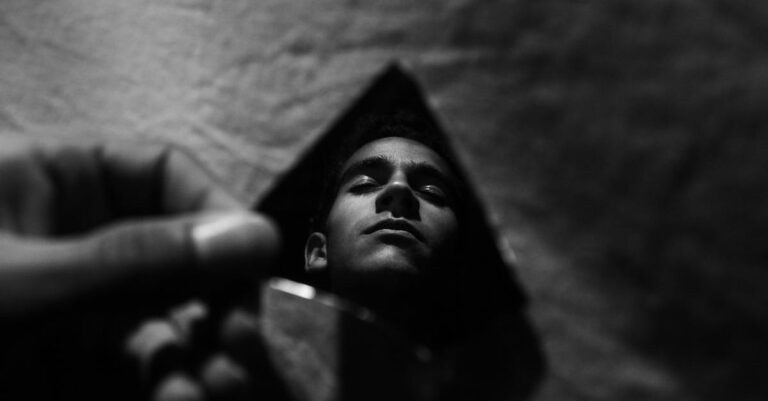
Dr. Elara Voss had always believed memory was a ledger of moments, precise and immutable. Her work at the Neurocognitive Advancement Institute focused on refining neural implants to enhance recall, a project she called the Lattice. It was meant to map and amplify synaptic patterns, turning fleeting impressions into enduring data. The first trial had been on herself—a modest test to calibrate the device’s algorithms. She remembered the sterile tang of antiseptic, the hum of the surgical suite, the cold weight of the implant settling into her temporal lobe. The procedure was flawless. By morning, her mind felt sharper, as though she’d reassembled a puzzle missing pieces she’d never known were lost.
But by dusk, the first fissures appeared. A memory of a place she’d never been: a sun-bleached dock stretching over water so blue it hurt to look at. The smell of salt and tar, the creak of wooden planks beneath her feet. She blinked, disoriented, and the image vanished. She told herself it was fatigue, the side effect of a new neural interface. But the next day, the memory returned—more vivid, more detailed. She could taste the brine on her lips, feel the rough grain of a rope in her hands. It wasn’t just a dream. It was something else entirely.
Her colleague, Dr. Marcus Hale, dismissed her concerns. “You’re overstimulated,” he said, peering over his glasses as she described the sensation. “The Lattice is still calibrating. Give it time.” But Elara couldn’t ignore the growing unease. The memories didn’t feel like intrusions; they felt like recollections. They carried the weight of lived experience, the kind that didn’t fade with sleep. She began to track them, jotting down fragments in a leather-bound journal: a child’s laughter echoing through an empty hall, the scent of burnt sugar at dusk, the sound of a violin played in a language she didn’t know. Each entry felt like a breadcrumb leading her deeper into a labyrinth she hadn’t built.
The more she explored, the more her own past began to fray. Conversations with friends felt hollow, their faces blurring at the edges. She found herself replaying old photographs, searching for clues in the expressions of people she’d known. A face in a crowd—a woman with her own eyes—flickered in her mind, then disappeared. She started to question whether the Lattice was enhancing her memory or erasing it. Was she losing herself to the echoes of another life, or had she always been someone else entirely?
One night, she accessed the Lattice’s data logs, bypassing security protocols she’d helped design. The files were encrypted, but she’d built backdoors into the system. What she found wasn’t a record of her neural activity—it was a dossier. Names, dates, locations. A life that wasn’t hers. A woman named Lira Voss, born in 2037, raised in a coastal town that didn’t exist on any map. The files detailed her movements, her relationships, her death—officially recorded as a drowning, though the circumstances were suspicious. Elara’s hands trembled as she scrolled through the documents. This wasn’t a memory. This was a lie.
She confronted Marcus, but he refused to acknowledge the files. “You’re seeing what you want to see,” he said, his tone patient but firm. “The Lattice isn’t designed for that. It’s a tool, Elara. It doesn’t create realities.” But she knew better. The device had always been more than a tool. It was a key, and she’d found the door it unlocked. The question was whether she wanted to step through it.
The memories grew more intense, spilling into her waking hours. She would be in her lab, surrounded by the hum of machines, and suddenly hear the crash of waves against stone. She would reach for her coffee mug, and for a moment, her fingers would remember the grip of a different object—a hammer, maybe, or a brush. The boundaries between her identity and Lira’s Voss’s were dissolving, and with them, her sense of self. She began to wonder if she’d ever been real at all.
One morning, she found a photograph in her journal—a black-and-white image of a woman standing on the same dock from her memories. The woman’s face was familiar, though Elara couldn’t place why. She took it to Marcus, but he didn’t recognize her. “It’s not in any database,” he said, frowning. “Maybe it’s a fake.” But Elara knew better. This wasn’t a fabrication. It was a piece of the puzzle, and she was running out of time to put it together.
The deeper she dug, the more the lines between her life and Lira’s Voss’s blurred. She started to see her own reflection in strangers, to hear her own voice in conversations she hadn’t had. The Lattice wasn’t just amplifying memories—it was rewriting them. And as the truth came into focus, she realized she wasn’t just uncovering a hidden identity. She was confronting the possibility that she’d been someone else all along.
In the end, Elara stood at the edge of the dock, the same one from her memories, and let the waves crash against her. The weight of two lives pressed against her chest, but for the first time, she felt whole. She wasn’t a pioneer, nor a pawn. She was a mosaic, stitched together from fragments of a past she hadn’t chosen but had always carried. And as the sun dipped below the horizon, she knew the Lattice had done more than enhance her memory—it had given her the courage to remember who she truly was.


